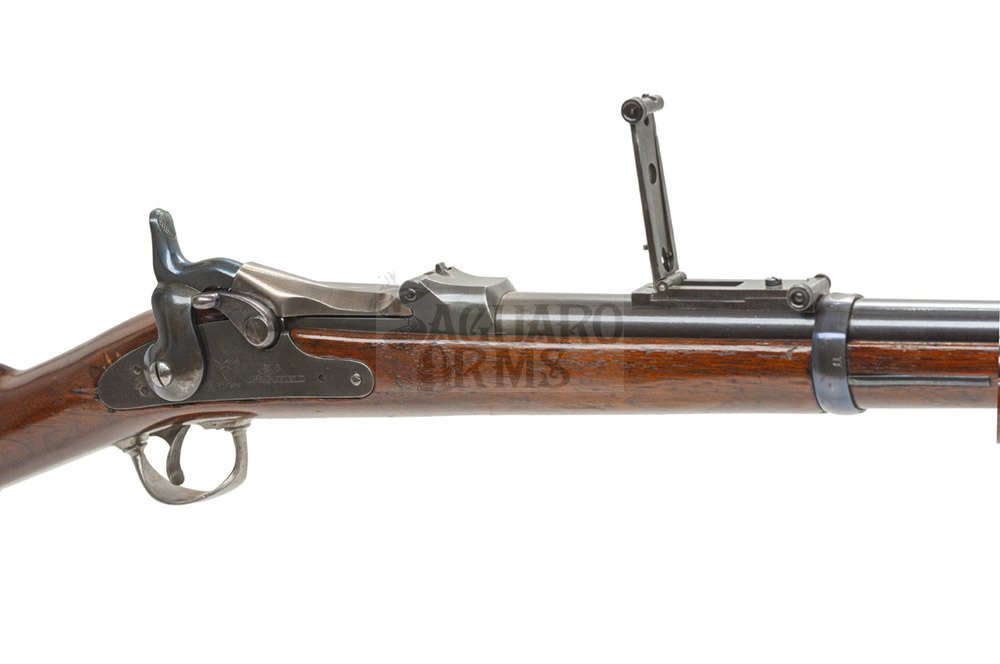

At the end the trapdoor ammunition was loaded with smokeless powder. The rifles and carbines were in service until the Spanish-American War in 1898, even though the first line firearm by that time was the new.

45-70 carbines when they were defeated by the Indians at the battle of Little Big Horn in 1876. George Armstrong Custer's cavalry was armed with. The trapdoor was also made in a carbine version. A trained shooter could fire 12-13 rounds a minute with a Springfield Trapdoor. To begin with the bullet weight was 405 grains, but it was later increased to 500 grains. It wasn't until 1873 that the perhaps most legendary trapdoor rifle was introduced: The Model 1873 Springfield Trapdoor. This cartridge is quite similar to the Norwegian 12 mm Remington cartridge, but the American version is a tad more powerful. 50-70-450 cartridge, today known to most shooters as the. The next models, the 18, were chambered for the. 58-60-500, where 60 is the powder charge in grains and 500 is the bullet weight in grains.Īmerican military authorities soon found out that the calibre was too large. Because of it was built on many old parts the production cost per firearm was the modest amount of $5. The first model got the designation Model 1865 and was later called 'First Allin'. The 'trapdoor' breech block was fitted and attached to the top of the barrel with a hinge secured by soft solder and a single screw. The face of the breech plug was milled to form a locking lug seat. The barrel of the muzzleloading musket was milled off just in front of the breech plug. The first trapdoor rifle, or 'Allin Conversion', which was the official name of the model, was chambered for a. The muzzleloading rifle-muskets were outdated even though the newest muskets were barely five years old when the conversion to trapdoor mechanism started. The amount of muzzleloading muskets that were left from the war was huge. By converting the old muzzleloading muskets the government would save a fortune compared to building a new firearm from scratch. His mechanism was probably chosen because it was based on a conversion of the Model 18 Springfield. Allin, an employee of the government owned Springfield Armoury. Despite the international competition the winner eventually was Erskine S. The plans to adopt a breech-loading infantry rifle were started as during the Civil War (1861-65), and gunsmiths from all over the world were invited to submit suggestions for a new rifle mechanism. The Springfield Trapdoor rifle was a result of the need of the US Army for a breech-loader that could be fired with metallic cartridges. Model 1884 Springfield Trapdoor in calibre.


These rifles used four different cartridges: One roundball cartridge and three types of conical-ball cartridges.
#1873 SPRINGFIELD TRAPDOOR WITH EARLY 1868 HAMMER HOW TO#
Learn how to make paper cartridges for Norwegian kammerlader and pillar-breech rifles. Norwegian kammerlader and pillar-breech rifle paper cartridges (You must be logged in to the forum to chat.) Santa Anna (bildet) kom derimot uskadd fra hendelsen. Om det var for å feire forsterkningene vites ikke, men Alamos 12-pundskanoner avfyrte to skudd, hvor det ene traff president og general Santa Annas hovedkvarter. De nyankomne gjorde at de fåtallige forsvarerne fikk fornyet håp om flere forsterkninger på den åttende dagen av beleiringen. Forsterkningene som ble kjent som Gonzales Ranging Company, ankom til Alamo kl. Styrken kom til unnsetning fra Gonzales som et direkte svar på William Barret Travis' bønn om hjelp en ukes tid i forveien. Mens enda en kaldfront seg innover Alamo fikk garnisonen 32 sårt tiltrengte forsterkninger.


 0 kommentar(er)
0 kommentar(er)
